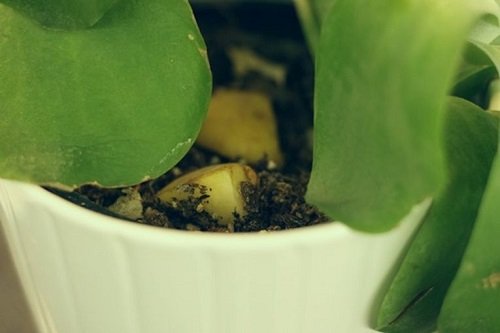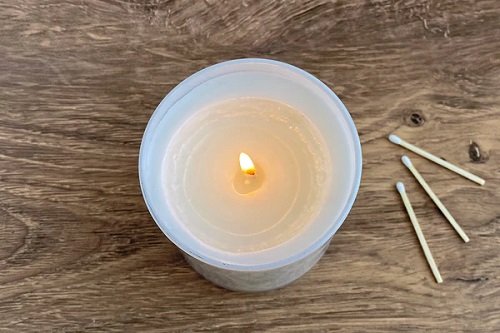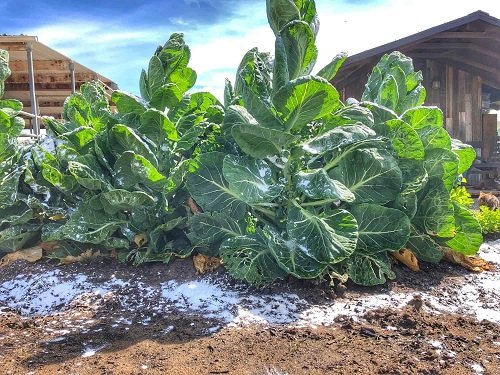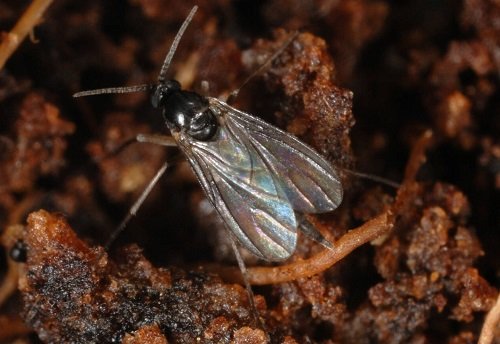Find out about Types of Fungus Gnats and How to Get Rid of Fungus Gnats in sure-shot ways to save your garden from infestation.
Do you want to know about the Types of Fungus Gnats and How to Get Rid of Fungus Gnats? Keep on reading to get the best tips and tricks!
What are Fungus Gnats?
Fungus gnats are small flying insects that belong to the Sciaridae family. These are commonly found in damp soil, especially in indoor plants, greenhouses, and gardens.
They are attracted to moist conditions, and their larvae feed on decaying organic matter and plant roots, which can cause damage to plants. Gnats are typically dark gray or black in color and have long, thin legs and wings.
Why Do You Need to Get Rid of Fungus Gnats?
- Fungus gnat larvae feed on plant roots, which can cause damage or even kill plants.
- These can lead to stunted growth, wilting, and reduced crop yields.
- Fungus gnats can spread plant diseases from plant to plant, which can lead to crop damage and loss.
- Fungus gnats can be a nuisance to gardeners and homeowners.
- A high-magnitude fungus gnat infestation may require the use of pesticides, which can have negative effects on human health.
- Fungus gnat infestation can make indoors look unhygienic and can affect the aesthetics of homes.
How to Get Rid of Fungus Gnats?
Regularly inspecting plants for signs of fungus gnat larvae or adults can help to identify and control infestations early. Look for larvae in the soil or on the roots, and look for adults flying around the plant.
1. Potato Slices

Placing potato slices into the growing medium can attract fungus gnat larvae, which will feed on the potato and can then be removed from the soil.
Simply place a few potato slices on top of the soil and leave them there for a few hours. Then, remove the potato slices and discard them along with any larvae that have been attached to them.
2. Use Sticky Traps
Sticky traps are a non-toxic and effective way to control adult fungus gnats. Simply place the trap near the plant, and the gnats will be attracted to the sticky surface and become trapped. These traps can be purchased at garden centers or online.
3. Use Beneficial Nematodes
Beneficial nematodes are microscopic worms that feed on fungus gnat larvae. You can get them from garden centers or online. Apply to the soil according to the instructions on the package.
Beneficial nematodes can be an effective and environmentally-friendly way to control fungus gnats.
4. Apple Cider Vinegar
Apple cider vinegar is great for attracting and trapping adult fungus gnats. Simply fill a small dish with apple cider vinegar and add a few drops of dish soap.
It will attract gnats, and they will get trapped in the soap.
5. Neem Oil
Neem oil is a natural insecticide that can be effective in controlling fungus gnats. Mix a few drops of neem oil with water and apply the mixture to the soil.
The neem oil will disrupt the growth and development of the fungus gnat larvae, preventing them from developing into adults.
6. Soap Water

To make soap water, mix a few drops of liquid dish soap with water in a spray bottle. Shake the bottle to mix the solution, then spray it directly on the gnats.
The soap will cover the gnats and suffocate them. Make sure to spray any areas where the gnats are likely to congregate, such as near-standing water or areas with high humidity.
7. Hot Water
Hot water can be used to kill fungus gnat larvae in the soil. Simply pour hot water (not boiling) onto the soil, making sure to saturate the entire pot.
This will kill the larvae and disrupt the lifecycle of the fungus gnats.
8. Non Toxic Spray

There are many non-toxic sprays available that can be effective in controlling fungus gnats. Look for products that contain natural ingredients, such as essential oils, or use a homemade mixture of water, dish soap, and vinegar.
Spray the soil and plant foliage with the solution, making sure to cover all surfaces. Repeat as needed until the infestation is under control.
9. Wine Trap
Fungus gnats can be attracted to the smell of wine, making it an effective trap. Simply fill a shallow dish with red wine and add a few drops of dish soap.
The gnats will be attracted to the wine and become trapped in the soap.
10. Candle Wax Trap

This trap involves placing a candle in a shallow dish and lighting it. The gnats will be attracted to the light and fly into the wax, becoming trapped.
This method is not as effective as other traps but can be useful in combination with other methods.
11. Rotten Fruit

Fungus gnats are attracted to the smell of rotten fruit, making it an effective lure. Place a piece of ripe fruit in a shallow dish and cover it with plastic wrap, making a few small holes for the gnats to enter.
The gnats will be attracted to the fruit and become trapped in the dish.
12. Diatomaceous Earth

Diatomaceous earth is a natural and non-toxic powder that can be effective in controlling fungus gnats. Sprinkle it over the soil and plant foliage, making sure to cover all surfaces.
The tiny particles of diatomaceous earth act like razor blades, cutting the exoskeleton of the gnat, which causes it to die.
13. Use Any Ant Killer Powder
You can go for any ant killer powder in the market to get rid of gnats. Simply spray it around the plants and the area where you spot the gnats, and it will take care of them.
14. Use Borax Powder
To do this, mix one tablespoon of Borax powder with one gallon of water and spray the solution onto the gnat-infested areas. Re-apply every few days until the gnats are gone.
15. Hydrogen Peroxide

Mix 3-4 teaspoons of Hydrogen Peroxide in a liter of water in a spray bottle and spray it directly on the gnats. The hydrogen peroxide will act as a natural insecticide, killing the gnats on contact.
Note: This should be the last resort, as Hydrogen Peroxide can also kill beneficial insects and bacteria.
Types of Fungus Gnats
1. Bradysia difformis
Bradysia difformis is a species of fungus gnat common in moist environments such as soil, compost, and decaying organic matter. They are small, delicate flies that are typically 2-3mm long and have a yellow-brown coloration.
2. Dung Gnat
It is a species of fungus gnat that is found in animal feces and other decaying organic matter. They are small, delicate flies that are typically 2-3mm long and have a brownish-yellow coloration.
3. Stem Maggot
Also known as Bradysia tritici, it is a species of fungus gnat common in wheat fields. The larvae of tritici feed on the stem tissue of wheat plants and can cause damage, leading to reduced yields.
4. Onion Maggots
The onion maggot is a species of fungus gnat. They are small, delicate flies that are typically 2-3mm long and have a black coloration. These feed on the roots and bulbs of onion plants.
5. Leafminer Fly
Popular as Bradysia impatiens, this fungus gnat is common in a variety of environments, including greenhouses, gardens, and forests.
The larvae of these gnats feed on plant tissue and can cause damage to leaves, leading to yellowing and distorted growth.
6. Mushroom Fly
Lycoriella ingenua is a species of fungus gnat that is common in mushroom farms. They are small, delicate flies and have a shiny, black coloration. These feed on the mycelium of mushrooms and can cause damage to the crop.
7. Lycoriella solani
Common in mushroom farms, these are typically 2-3mm long and have a yellow-brown coloration. They feed on the mycelium of mushrooms and can cause damage, leading to reduced yields.
8. Darkwinged Fungus Gnats
Bradysia paupera is a species of fungus gnat common in a variety of environments, including soil, compost, and decaying organic matter. They are small flies and have a black coloration.
The larvae of paupera feed on decaying plant matter and can sometimes cause damage to the roots of plants.










